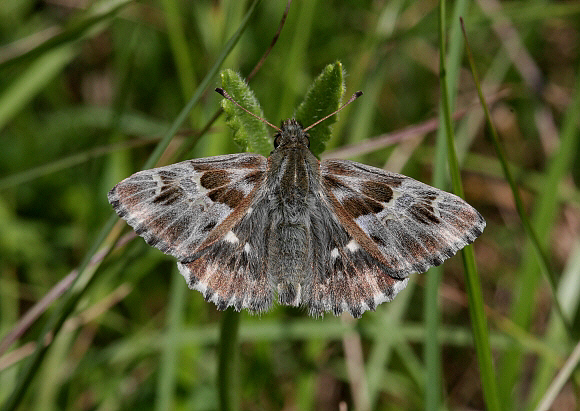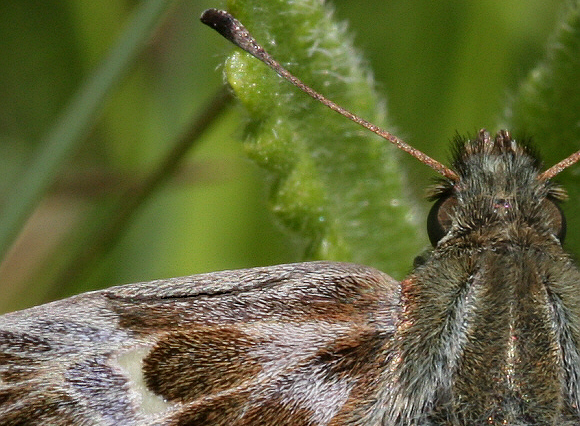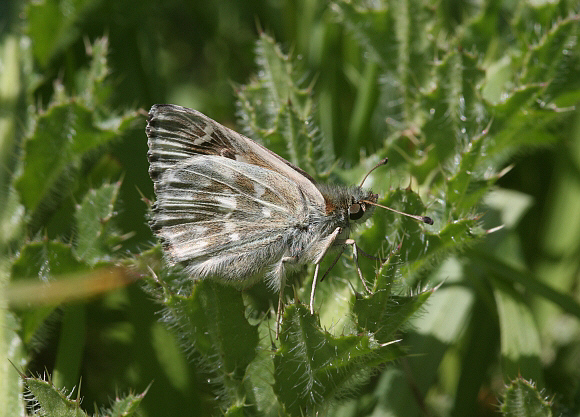 Tufted Marbled Skipper Carcharodus flocciferus, male, Croatia – Peter Bruce-Jones
Tufted Marbled Skipper Carcharodus flocciferus, male, Croatia – Peter Bruce-Jones
Introduction
There are 8 species in the genus Carcharodus, 7 of which are found in Europe – alceae, lavatherae, tripolina, baeticus, flocciferus, orientalis and stauderi. The remaining species dravira is restricted to Iran, northern India & Pakistan.
All Carcharodus species are dark greyish-brown in colour, marbled with pale grey, and all possess hyaline ( semi-transparent ) “windows” on the forewings, and a band of small white median spots on the hindwings. The males of all species have androconial folds on the leading edge of the fore-wings, which disseminate pheromones to entice females to mate.
 Androconial fold of male Carcharodus flocciferus – Peter Bruce-Jones
Androconial fold of male Carcharodus flocciferus – Peter Bruce-Jones
The various Carcharodus species can be distinguished by close examination of the configuration and shape of the hyaline spots and white markings. Carcharodus flocciferus can be separated from its very similar relative orientalis by looking closely at the white markings on the underside hind-wings. These are prominent and well defined in flocciferus, but suffused in orientalis. Another ID diagnostic is the group of 3 tiny hyaline spots at the apex of the forewing – these are arranged in a crescent in flocciferus, but almost in a straight line in orientalis.
The distribution of orientalis and flocciferus differs. The former is restricted to Hungary, Croatia, Serbia, Bulgaria, Greece, Turkey, Iran and the southern Ural mountains, while flocciferus has a wider distribution, being found in scattered colonies from Spain to southern Siberia and the Altai.
Habitats
This butterfly is found in grassy places including fields, flowery meadows, woodland clearings and alpine pastures at altitudes between about 800-2000m.
 Tufted Marbled Skipper Carcharodus flocciferus, Croatia – Peter Bruce-Jones
Tufted Marbled Skipper Carcharodus flocciferus, Croatia – Peter Bruce-Jones
Lifecycle
The butterfly has 2 generations per year, emerging in late May and August.
The larvae feed within silk tents spun on the crowns of woundworts Stachys recta, alpina, officinalis, germanica, palustris, sylvatica and scardica. Larvae of the 2nd brood go into hibernation when quite small, at the base of the foodplants.
Adult behaviour
Males of flocciferus, and to a lesser extent females, are fond of basking with wings outspread on the terminal leaves of woundwort, unlike orientalis which almost always basks on stones or bare ground.
